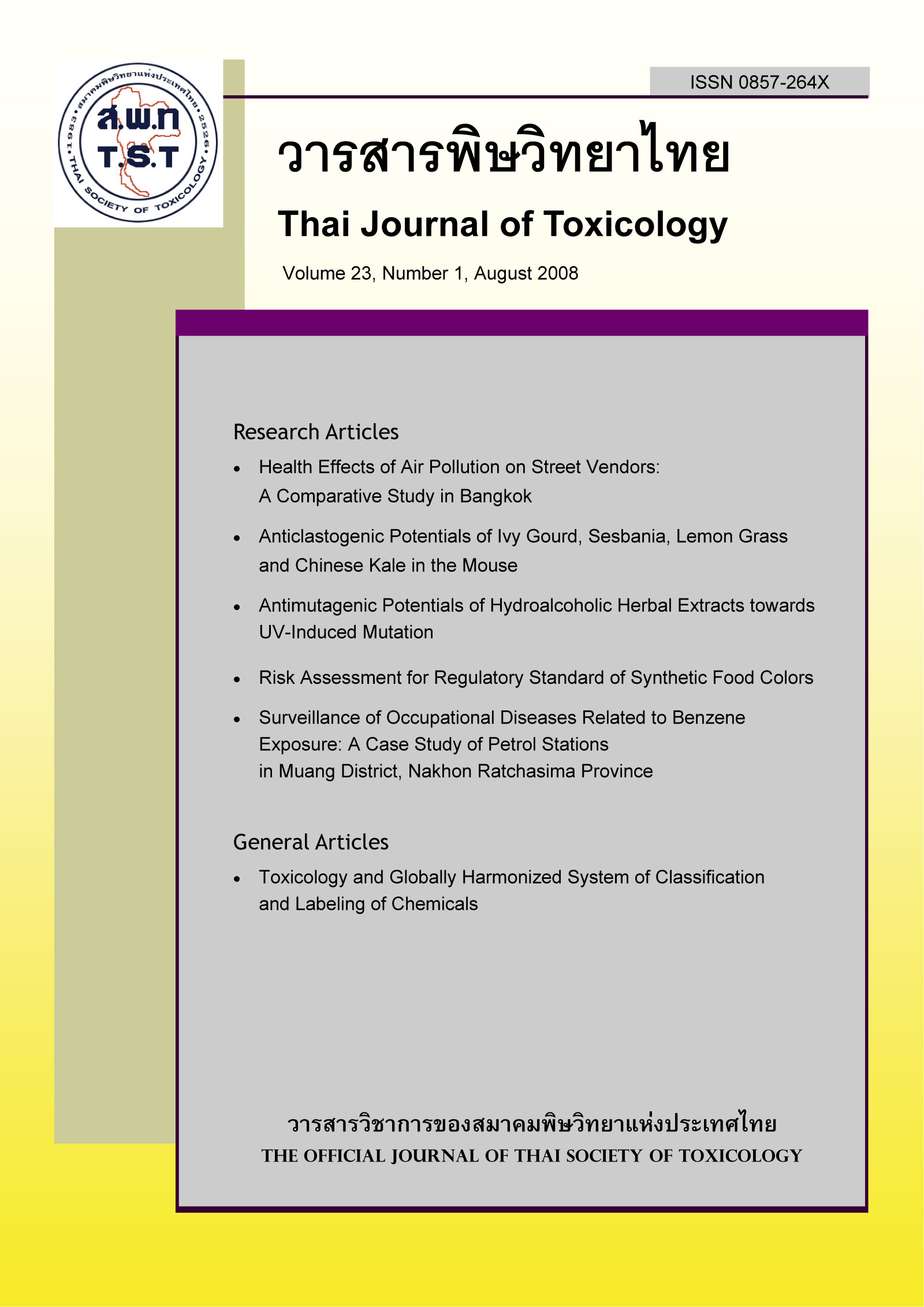Risk Assessment for Regulatory Standard of Synthetic Food Colors
Main Article Content
Abstract
The standard of food additives under the notification of the Ministry of Public Health No. 281 has been set up based on General Standard for Food Additives (GSFA) of Codex Alimentarius Commission (CAC). However, there are many groups of food additives using the old maximum use levels including synthetic food colors. Thus, it needs to assess risk from the exposures of food color additives in order to develop the food standards that conforms to international standards and authorizes national food safety. This study aimed to improve the maximum used levels of nine synthetic food colorsbased on risk assessment process. Estimating color intakes based on the maximum use levels establishing in GSFA and found that the exposures of these color additives were below the Acceptable Daily Intake (ADI) of each additive (ADI is the safety margin of exposure). It may be due to the exposures were estimated from several food categories that the maximum use levels have been adopted by CAC. These exposures were lower estimation because Thai FDA has allowed the use levels for some food categories that the maximum use levels are not adopted by CAC. Thus the exposures should be estimated from all food categories that use color additives based on the maximum use levels that are considering in all steps of Codex commodity committees and have been pronounced in food standards of different countries. The assessment in risk group of population (Thai population aged 3-5.9 years) indicated that the exposures of seven synthetic food colors, including Carmoisine, Ponceau 4 R, Erythrosine, Riboflavins, Tartrazine, Sunset yellow and Indigotine were above the ADI. Thus, the maximum use levels of these color additives should be reduced in some food categories based on the health risk and technology justification. The maximum use levels recommended in this study were supported by the process of risk assessment to ensure safety for use in food without adverse effects on consumer health because the exposures will not over the ADI that advised by JECFA (the Joint FAO/WHO Expert Committee on Food Additives).


